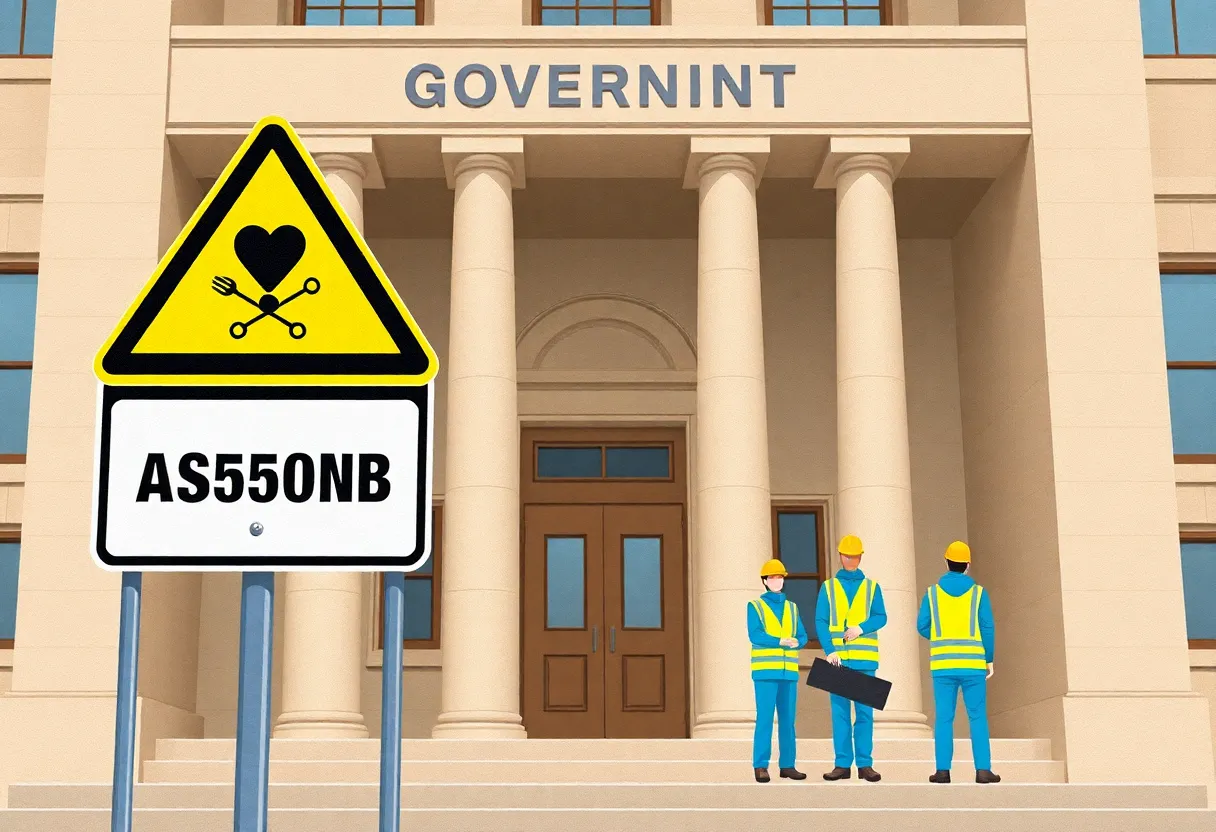News Summary
The EPA has announced a significant ban on chrysotile asbestos set for 2024, amid concerns about future enforcement and global regulatory disparities.
EPA’s Recent Asbestos Regulations: A Step Forward or Step Back?
In a bold move to address the ongoing health crisis posed by asbestos exposure, the Environmental Protection Agency (EPA) announced a significant ban on ongoing chrysotile asbestos uses, set to take effect in 2024. This ban, however, is just a piece of a larger puzzle as the agency rolls out several new laws aimed at reducing asbestos risks for both workers and consumers alike.
The Landscape of Asbestos Legislation
As the EPA pivots towards a focus on stronger regulatory policies, it is crucial to remember how lax current regulations are compared to global standards. Many countries including Russia, China, and India boast minimal to no asbestos regulation, leading to alarming rates of mesothelioma and related diseases. There is a clear correlation between strict regulations on asbestos and a reduced incidence of health issues stemming from exposure. The upcoming chrysotile ban marks a promising direction as it prohibits all known uses of this hazardous substance in the United States, including important materials used across various industries.
New Leadership, New Challenges
As the EPA undergoes leadership changes in 2025, many are left wondering how these shifts may impact the effectiveness of asbestos regulation. The concern arises that some new appointees have historically prioritized deregulation, potentially leading to relaxed enforcement of existing measures. For instance, the regulatory review process could instigate a reevaluation of current asbestos rules, including the impending chrysotile ban, causing unintended delays in enforcement.
The Role of Agencies
While the EPA takes the lead on overseeing asbestos regulations, the Occupational Safety and Health Administration (OSHA) also plays a pivotal role by offering guidelines for safe workplace handling of asbestos material. Despite any changes from the EPA, individuals and employers must continue to implement measures to minimize exposure risks, emphasizing vigilance and safety across all sectors.
A Cautionary Note on Economic Impact
As the EPA’s regulation process progresses, there are growing concerns related to the agency’s approach to economic impact assessments. These assessments could influence the efficiency of future asbestos-related rules, potentially allowing companies to maneuver around existing regulations. If budget cuts occur within the EPA, the resources dedicated to monitoring and enforcing asbestos laws could diminish significantly.
Interim Protections and Ongoing Regulations
In a bid to enhance workplace safety, the EPA finalized new rules under the Toxic Substances Control Act (TSCA) in early 2024, primarily banning chrysotile asbestos and methylene chloride. The chrysotile ban encompasses all known uses and includes protective measures such as exposure limits and monitoring requirements for workplaces. Additionally, the newly established methylene chloride regulations allow certain uses under strict workplace protection programs while implementing a de minimis exemption for products containing less than 0.1% of the substance.
The Future of U.S. Asbestos Policy
As the healthcare community eagerly watches to see how these regulations will unfold, it remains uncertain what the future landscape of U.S. asbestos policies may look like. While the chrysotile ban offers hope for reducing the risks associated with asbestos, there are fears that changes within the EPA could lead to a rollback of critical protections. The potential for future regulatory shifts—including proposals that may loosen national emission standards affecting enforcement—has many advocacy groups on high alert.
In conclusion, as the EPA strives to balance economic priorities with public health concerns, the outcome of these regulatory changes remains to be seen. All eyes will be on how these new policies play out in protecting workers and consumers from the dangers of asbestos exposure. The ultimate test will be whether the agency can maintain its commitment to safeguarding health while navigating the turbulent waters of political and economic pressures.
Deeper Dive: News & Info About This Topic
HERE Resources
Breakthrough in Mesothelioma Treatment: New Hope for Patients
Judge Rejects J&J’s $10 Billion Talc Settlement: A Major Blow to Plaintiffs
Breakthrough in Mesothelioma Treatment: GSK’s Zejula Shows Promising Results
Newhaven Enterprise Zone Boosts Cultural Arts Fund
Tragic Loss: 85-Year-Old Woman Succumbs to Asbestos-Related Disease
Johnson & Johnson’s Legal Struggle Over Mesothelioma Research Intensifies
The Ongoing Asbestos Crisis in Australia: A Public Health Emergency
Flood at Ballston Spa Public Library Uncovers Asbestos, Closure Extended
Shocking Reality: The Hidden Dangers of Asbestos and Mesothelioma
Asbestos Crisis Emerges in Gaza Amid Ongoing Conflict
Additional Resources
- Mesothelioma.com: What Happens If EPA Removes Asbestos Regulations?
- Wikipedia: Asbestos
- Hunton: EPA Finalizes Risk Management Rules for Asbestos and Methylene Chloride
- Google Search: EPA Asbestos Regulations
- New York Times: EPA Staff and Industry Lobbyists
- Encyclopedia Britannica: Asbestos
- Environment Energy Leader: Ohio Schools Under EPA Mandate for Asbestos and Lead Paint Remediation
- Google News: Asbestos Regulations



















